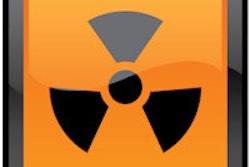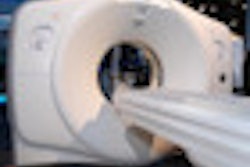Medical radiation no longer tops the top 10 list of technology hazards published each year by the ECRI Institute. That dubious honor, for the second year in a row, goes to those beeping, buzzing, distracting, infuriating, wolf-crying alarms that are becoming ubiquitous throughout healthcare.
But the 2014 list published this week still gave prominent placement to radiology and medical radiation -- most importantly by awarding the No. 3 spot to concerns over whether children are still receiving higher-than-necessary radiation doses, despite new information clarifying the risk they face from inappropriate CT scanning.
The risks of radiation from CT have always been hard to quantify; however, the picture is changing with newly published empirical studies that further suggest children who are exposed to ionizing radiation from medical imaging are at greater risk of developing cancer later on, ECRI noted.
Brand new on this year's list at No. 5 -- and, coincidentally, an important component of imaging's growth in recent years -- is occupational radiation hazards from imaging technologies in hybrid operating rooms (ORs).
Risks to pediatric patients from adult technologies came in this year at No. 8 -- down a notch from its seventh-place spot last year. Other imaging-related "winners" include data integrity failures in electronic health records (EHRs) at No. 4, the same spot it occupied last year.
Absent from the 2014 list, on the other hand, was the hazard "lack of interoperability of devices," which took fifth place last year. It's tempting to imagine that its absence reflects some modest progress made by manufacturers in addressing interoperability issues, as well as progress in international projects such as Integrating Healthcare Enterprise (IHE).
Below are the top 10 technology hazards for 2014, followed by summaries of hazards related to imaging:
- Alarm hazards
- Infusion pump medication errors
- CT radiation exposure in pediatric patients
- Data integrity failures in EHRs and other health IT systems
- Occupational radiation hazards in hybrid ORs
- Inadequate reprocessing of endoscopes and surgical instruments
- Neglecting change management for networked devices and systems
- Risks to pediatric patients from "adult" technologies
- Robotic surgery complications due to insufficient training
- Retained devices and unretrieved fragments
Pediatric radiation
While radiation risks have always been hard to quantify, newly published empirical studies "add to the evidence that exposure to ionizing radiation from diagnostic imaging at a young age can increase a person's risk of developing cancer later in life," ECRI wrote. As a result, efforts should be made to minimize a child's exposure to high doses of ionizing radiation, the report stated.
To minimize the risks, healthcare providers should use nonradiation-bearing imaging exams, such as MRI and ultrasound, when appropriate. Providers should also limit CT use to only when scans are really necessary, the authors wrote.
The report also addresses repeat scans: "If a patient has already been scanned at another institution, the facility can try to obtain the existing images from a previous scan, rather than repeating the scan," ECRI wrote.
Finally, the use of ALARA, or as low as reasonably achievable, doses is essential when scanning children with CT, according to the report. Above all, doses in radiation-bearing imaging exams should be tailored specifically to pediatric patients, a practice that is still not routine in many U.S. institutions, as recent studies have reported.
Radiation hazards in hybrid ORs
Hybrid operating rooms are a major trend in healthcare, bringing advanced imaging technologies into the operating theater for state-of-the-art guidance in interventional procedures -- not to mention growth opportunities for vendors equipping the new operating theaters.
But hazards lurk in the operating rooms of tomorrow, according to ECRI. In angiography, for example, workers in cath labs are well-versed in protecting themselves from radiation; however, personnel in the new hybrid operating rooms, who are often less experienced, can run into unnecessary risk.
"If a hybrid OR is to be implemented, healthcare facilities must have in place a radiation protection program that provides staff with the knowledge and technology they need to minimize occupational radiation exposures in this unique environment," ECRI wrote. Among the recommendations:
- Adequate training of hybrid OR staff in radiation protection issues
- Shielding for affected workers, including lead aprons, additional lead barriers that hang from the ceiling, and other protection devices, keeping in mind that "such protections are effective only if they are actually used"
- Continuous monitoring to ensure that doses to staff remain within prescribed limits -- incorporating traditional badges that are analyzed later for radiation exposure and new electronic badges that allow real-time monitoring
In April ECRI published a report on hybrid ORs equipped with angiography facilities.
Risks to children from 'adult' technologies
In this category, the No. 1 hazard is once again radiation-bearing scans such as x-ray and CT, most problematically when adult imaging doses are given to children, or when anatomic regions outside the area of interest are exposed to radiation, ECRI wrote.
Hazards also lurk in nonradiation-bearing technologies designed for adults but used in children, the report notes.
"Whenever possible, healthcare providers should use pediatric-specific technologies, rather than using adult-oriented technology off-label or employing workarounds," ECRI wrote. "Unfortunately, pediatric-specific devices can be slow to reach the market because of the small number of patients available to study, the devices' high-risk nature, and high development costs," according to the organization.
Data-integrity failures in EHRs
While electronic health records offer a wide and growing range of benefits thanks to the rapid growth of these systems since 2009, the persistence of bad data can put patients at risk by leading to incorrect treatment and patient assessment, ECRI wrote.
The hazards include data from a device such as a CT scanner being attributed to the wrong patient, missing or delayed data delivery, clock synchronization errors, problems associated with dual workflows (using both paper and electronic records), putting old information into a new report, and basic data-entry errors, which can be propagated far wider and faster in electronic records.
"Key steps in safeguarding the integrity of electronic patient data include assessing the clinical workflow to assess how the data is ... used by frontline staff, testing the system and the associated interfaces ... to verify that the system is functioning as intended, providing sufficient user training and support, and establishing mechanisms for users to report problems as they are discovered," ECRI wrote.



















